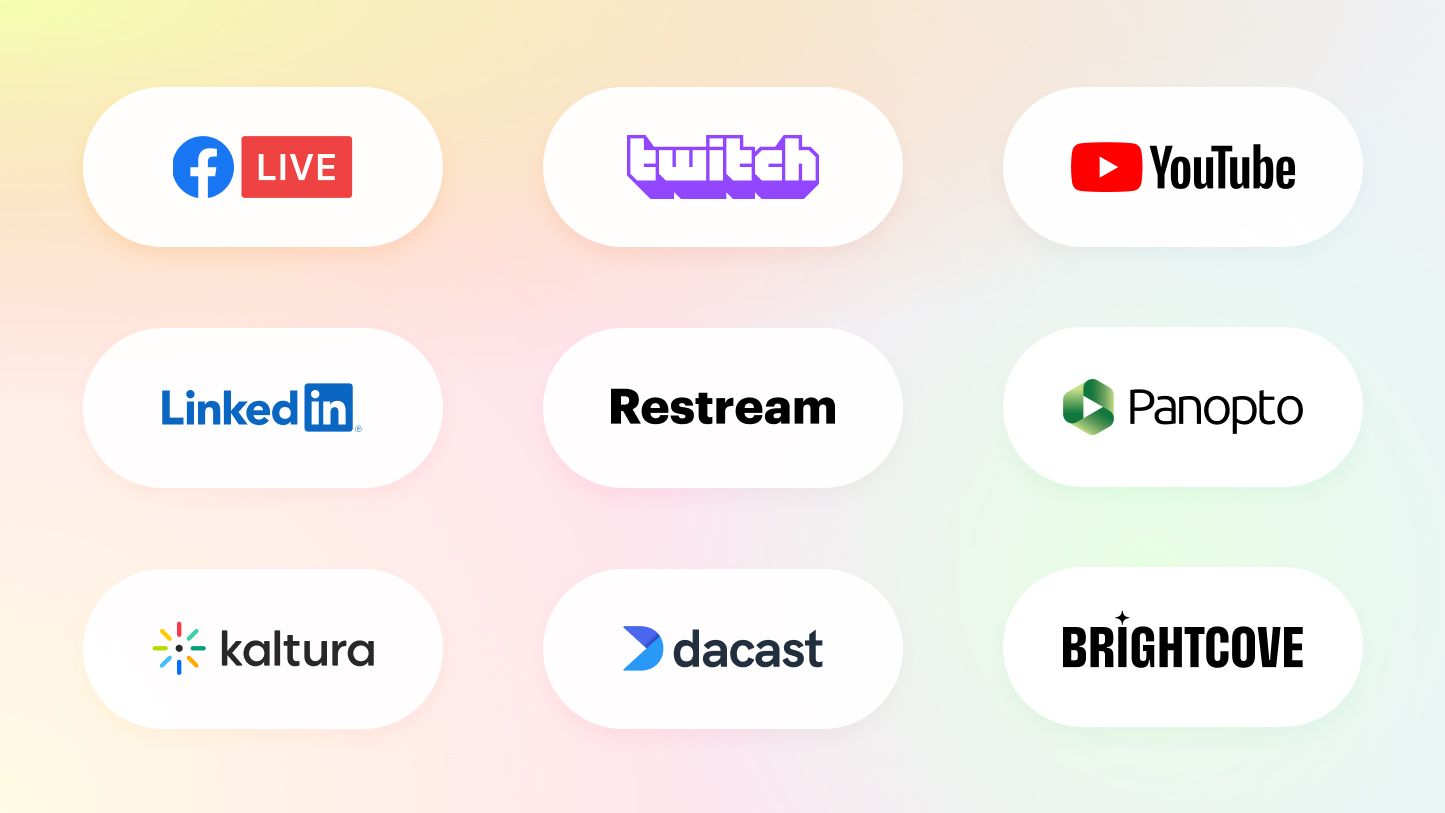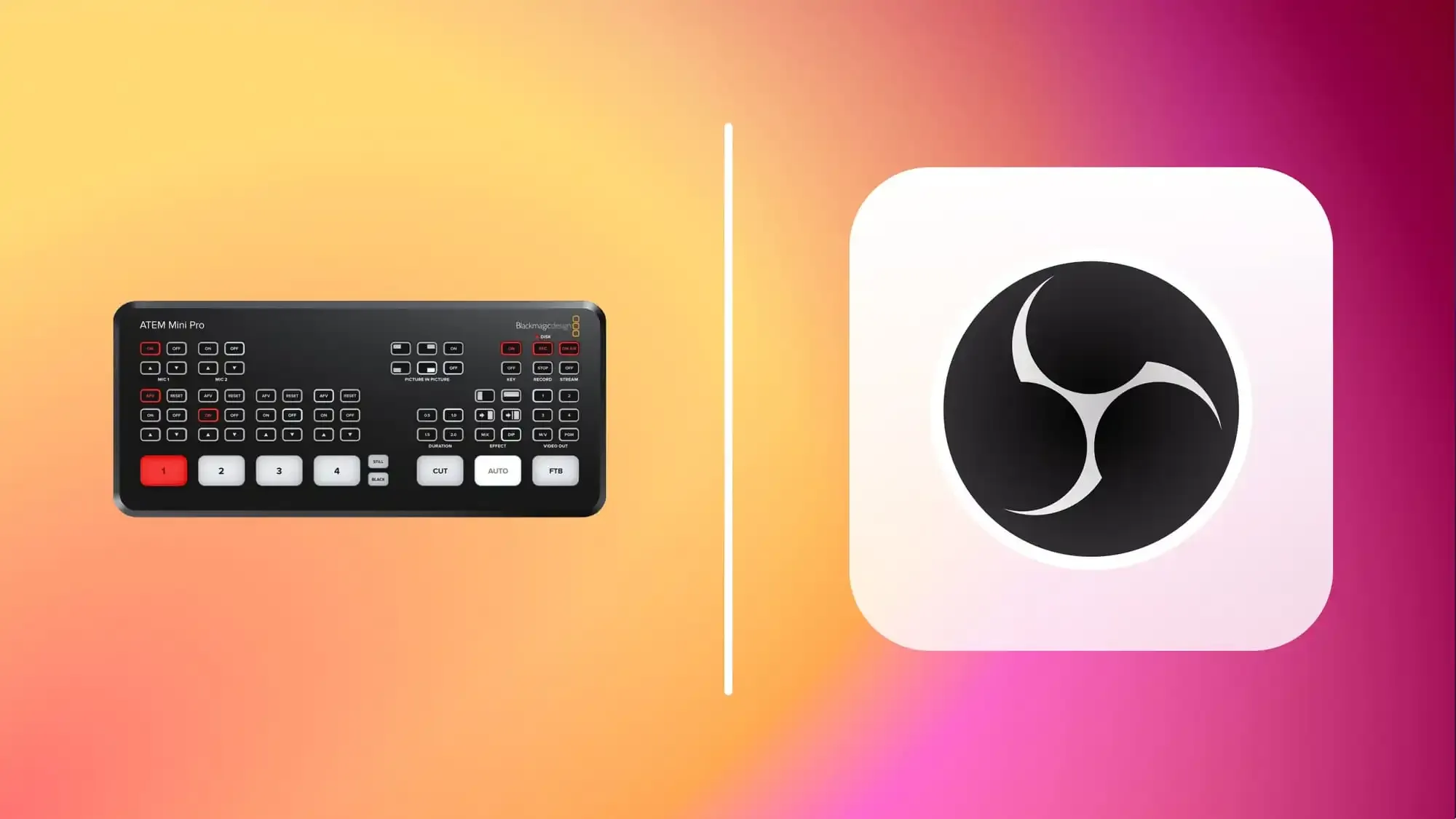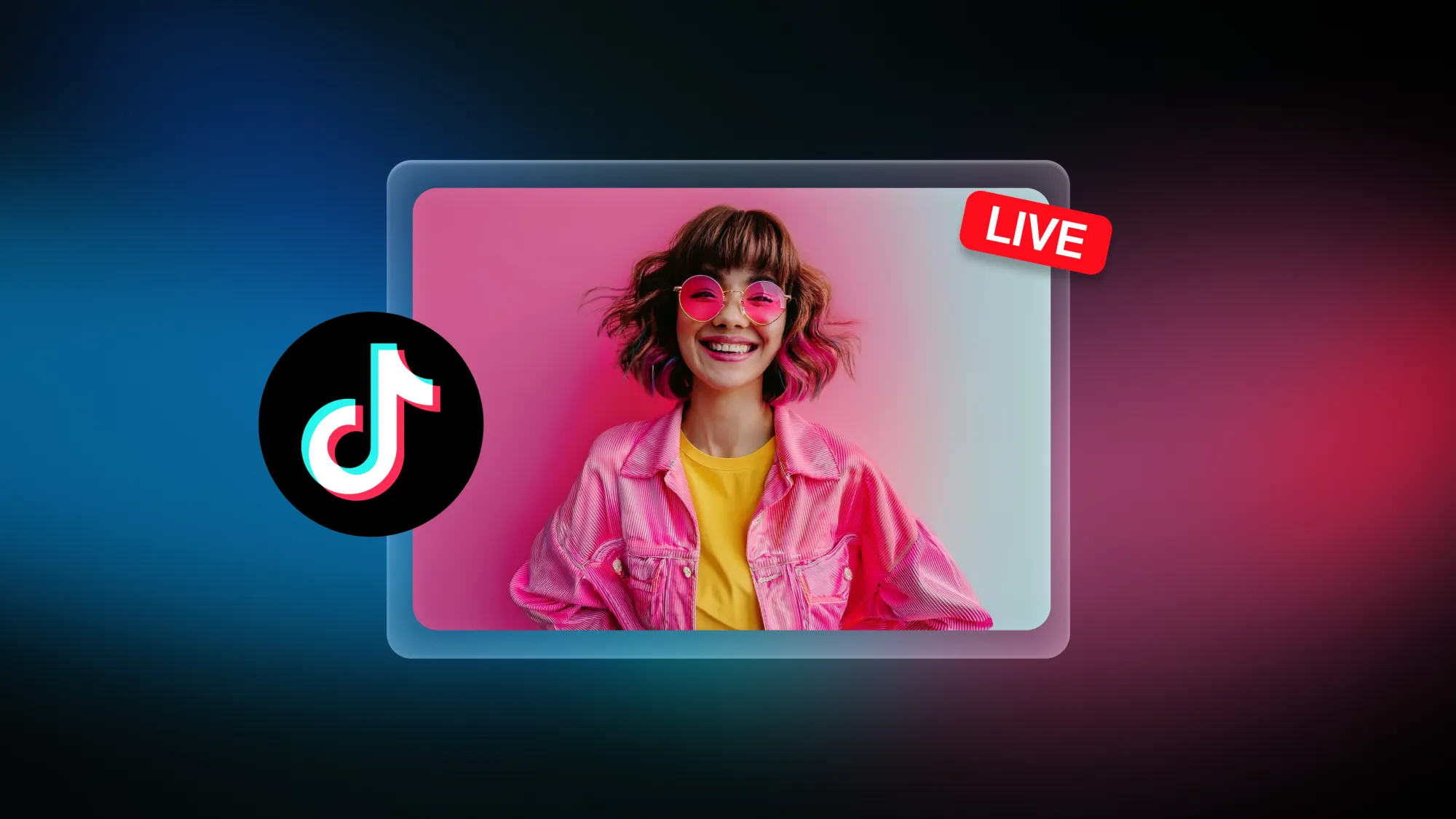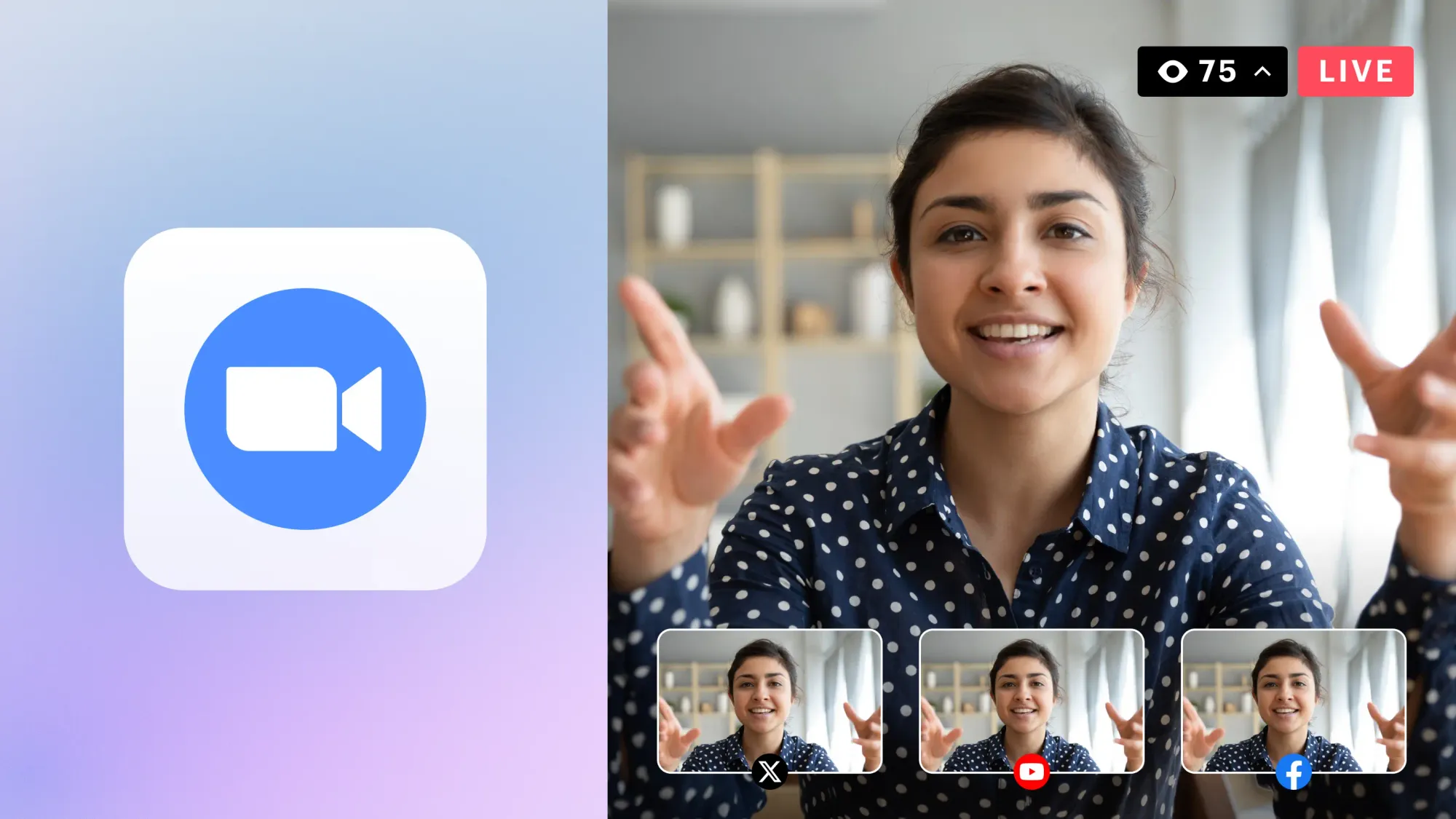Looking for the best live streaming platform to promote your brand and connect with your audience? We compiled a list of the 15 best live video streaming services worth looking at. Each platform has its benefits and drawbacks with unique offerings, and the best choice for you and your audience will depend on your specific needs.
What is a live streaming platform?
A live streaming platform is a website, application or software that allows you to broadcast live videos. When you upload a video to the platform, viewers can watch it in real time. A live streaming platform also tends to have other features related to video management, such as video storage, video recording and editing, or a video player.
Most major social media platforms have live video capabilities, giving you another tool to connect with your communities on these channels. Video-driven platforms like YouTube, Twitch and TikTok may not be considered “traditional” social media platforms but they all have social networking features such as liking videos, commenting on videos with a live chat, and following or subscribing to other users’ videos. Another major benefit to social streaming platforms is that they’re completely free to use.
Other video hosting platforms like IBM Cloud Video or Wowza aren’t social media networks either, but they still provide options for leaving comments live during the stream, as well as polls, quizzes or other engagement features.
What to consider when choosing a live streaming platform
What makes a good live streaming platform? At the very least, the service should provide video hosting and content management tools. It should also provide basic embedding tools, analytics and monetization.
To get you started, here are some key features to consider:
- Video hosting
- Video organization and management
- Secure live streaming features such as password-protected streams
- Monetization options such as subscriptions or advertising
- Device compatibility
- Stream analytics and monitoring
- Adaptive bitrate streaming
- RTMP streaming support
- Video editing and embedding
- Encoding capabilities
- Video cloud storage
- Pricing plan within your budget
Keep in mind that live streaming platforms come in many shapes and sizes, with some designed to fit specific industries or use cases. The best live streaming platform is the one that meets all of your needs, so consider first what you want to use a live streaming platform for.
Multistreaming to several platforms at once
If you want to expand your reach and grow your community, don’t limit yourself to just one streaming platform — go live on multiple social platforms at once. With Restream, you can go live on Facebook, Twitch, YouTube and more simultaneously.
Restream is a browser-based multistreaming solution that lets you create engaging and professional live videos and integrates with over 30 streaming platforms. You can also broadcast live streams to your website and upload pre-recorded videos to stream them live.
With Restream, you can supercharge your live streams:
- Centralize communication with multi-platform live chat in one window
- Upload and stream pre-recorded videos
- Monitor and measure performance with live stream analytics
- Integrate live shopping with product QR codes
- Add custom graphics, logos and backgrounds
- Invite remote guests to the stream with a secure link
- Broadcast to your guests’ channels as well as your own
- Schedule social media events in advance
- Save recordings of streams or use the Studio to record a video
Best live streaming platforms in 2024
1. YouTube Live
YouTube tops our list of live streaming services for its sheer number of users — 2.7 billion. With so many people from across the globe and from different age groups, YouTube is one of the most universal live streaming platforms you can choose. YouTube has several key features that make it a good choice for live streaming, like analytics, monetization, live chat and more.
The downside to YouTube is its size. There are so many creators on the platform that making your live videos stand out could be a challenge. Also, while YouTube is free, you’ll be subjected to its revenue share policy if you start monetizing videos. Plus, you don’t retain full ownership of your content when you upload it to YouTube.
Features
- Powerful analytics on your live videos
- Monetization options
- Save each of your live streams to your channel
- Chat function to communicate with viewers during the live stream
- Stream in 4K resolution
- Embed YouTube videos on your website
Pros
- Beginner-friendly
- Widely popular and well-known platform
- Free to use
- Offers live streaming and VOD hosting
Cons
- Primary purpose of the platform is on-demand videos
- Limited monetization options
- YouTube’s suggest algorithm promotes competitor content
2. Facebook Live
Facebook is a social media behemoth, with a global base of 3.05 billion monthly active users. The social network appeals to several demographics with millennials as the largest group of users. With Facebook, you can build on a network of established users, especially if you’re already active on the platform. Some of the downsides of Facebook are the limits on how long you can stream and restrictions on monetization.
Features
- Monetization options
- Broadcasting from desktop and mobile devices
- Analytics
- Editing recorded versions of live videos
- Live chat
- Scheduling live streams
- Go live on a personal profile, page or group
- Follower notifications when you plan to go live
Pros
- Ideal for connecting with an existing audience
- Well-known platform
- Free to use
- Use the scheduling feature to create live stream events
Cons
- Must have 10,000 followers and 600,000 minutes viewed in the last 60 days to activate in-stream ads
- Maximum video length is 90 minutes
3. Twitch
Twitch started out catering to gamers but expanded exponentially to other categories in 2020 in the wake of the pandemic. The average number of concurrent viewers watching streams on Twitch in 2023 was 2.45 million — and there were over 7.3 million channels streaming on Twitch each month in 2023. If you’re a gamer, Twitch should be one of the first platforms you consider. If you’re not a gamer, there still may be an audience for your content. The Just Chatting channel exploded in popularity in 2020, and other channels, like IRL, music, and art, are also popular.
While Twitch has several monetization options, you have to be a Twitch Affiliate or Partner to qualify. You can use Twitch’s live studio to stream, but it’s generally recommended to use a streaming software to get the best results.
Features
- Robust chat feature
- Custom emotes and moderation bots for live chat
- Monetization with subs, badges, gifted subs, emotes, donations and ads
- Live streams are discoverable by streaming to certain categories (including specific games or general genres)
Pros
- Subscribers get alerts when streamers go live
- Beginner-friendly
- Large user base and well-known platform
Cons
- Better for more niche content in gaming, tech and hobbies
- Strict requirements to access monetization options
- Not the best option for storing previous live streams
4. Kick.com
Kick is the newest live video streaming platform to come on the scene, launching in early 2023 and skyrocketing in popularity and users over the course of six months. The platform was seen primarily as an alternative to Twitch, with an emphasis on better monetization policies and more freedom for streamers. Although Kick drew a lot of attention in the months after its launch, its numbers are nowhere near Twitch’s. By the end of 2023, the number of average viewers on Kick reached just over 152,000.
Although Kick is still small, it’s growing steadily. And the platform may have far fewer viewers, but it also has fewer streamers. That means less competition for new creators who want to start streaming but feel intimidated by the sheer number of existing channels on Twitch.
Features
- Social features such as group streaming
- Creating and downloading clips from live replays
- Monetization options for creators
- More lenient moderation policies
Pros
- 95-5 revenue split in favor of streamers
- Lower threshold to join affiliate program compared to Twitch
- More opportunities for small streamers to get started
Cons
- Less discoverability than other major platforms
- Concerts over content regulation
- Uncertain future
5. TikTok LIVE
As a social media platform that’s geared toward viral videos, TikTok presents a great opportunity for live streamers. It’s also hugely popular and keeps growing steadily — the number of global users is expected to reach 900.7 million in 2024. Although short video clips dominate TikTok, there’s still space for live video creators to find an audience with longer content of up to 60 minutes. If your content is for Gen Z, then a presence on TikTok LIVE can be hugely beneficial.
You can go live from the app on a mobile device or use TikTok’s new live studio software for streaming on desktop. Only some TikTok users are allowed to go live on TikTok. Only accounts with 1,000 or more followers have the capability. Also, monetization options aren’t available unless you are 18 or older.
Features
- Dueting tool that allows users to use parts of existing videos from other users
- Primarily Gen Z audience
- “For You” recommendation algorithm that suggests new videos to users
- Picture-in-picture streaming
- Add more than one person to a stream
- Q&A feature to let viewers ask questions
- Add a moderator to your live stream and keyword filters for live chat
- Monetization options
Pros
- Viral growth possibility
- Free to use
- Live streaming can make you stand out
- Create live videos of up to 60 minutes
Cons
- Only accounts with 1,000 or more followers can go live
6. Instagram Live
Instagram is no longer just for sharing photos with your friends. You can find on-demand and live videos from your favorite brands and influencers on the platform, too. With an expected 1.4 billion monthly active users by 2024 (nearly 30% of global internet users), Instagram is a good choice for video content creators. When you go live on Instagram, your followers receive a notification so they can tune in. When the live video is over, you can choose to download it and post it to your Instagram feed so anyone can watch the replay.
One thing to keep in mind with Instagram Live is that users with personal accounts can only stream from a mobile device via the Instagram app. Instagram Live Producer allows you to stream from a computer using streaming software such Restream Studio or OBS Studio but only users with Professional accounts have access to it.
Features
- Live chat
- Inviting other creators to your live stream
- Broadcasting exclusively to paid subscribers
- “Ask a Question” sticker can make stream more engaging
- Live chat moderation and hiding offensive comments
- Monetization options
Pros
- Beginner-friendly
- Easy to use
- Your followers get a notification when you go live
- You can live stream on Stories
- Add fun filters and overlays to your stream
Cons
- Likes and comments on live video disappear when you post the replay to your feed
7. LinkedIn Live
LinkedIn is no longer just a professional networking site; it’s now a full-fledged content creation platform. You can find articles, videos, and live videos from influencers, brands and other professionals in your industry. With one billion members, LinkedIn isn’t as large as other social media platforms, but it does drive more leads. LinkedIn Live isn’t available to every user; you must meet certain requirements to get access. The platform also offers no monetization options.
Who should stream on LinkedIn? Any professionals who want to promote an event, take others behind the scenes of their companies, recruit new employees, establish industry authority by interviewing experts, or demonstrate expertise with tutorials and seminars.
Features
- Live chat and moderation tools
- Analytics
- Create an event on LinkedIn and stream directly to it
- Save previous live streams as recordings
- Gather questions from event attendees before the stream starts
- Need a third-party streaming tool to go live on LinkedIn
Pros
- Access to a young and affluent audience
- Previous live streams appear on your profile as regular posts
- LinkedIn pages can require viewer registration for live streamed events
Cons
- Must have 150 followers and be active on LinkedIn to live stream
- No monetization options
8. X (Twitter)
X (Twitter) might not be as large as Facebook or YouTube, but live streamers still have access to 353.9 million worldwide users. You can live stream on X through the app and on desktop, but you’ll need to use X’s Media Studio Producer with live streaming encoding software for the latter. You can also connect with Restream. When you go live on X, you can share a link directly to the stream, making it much easier for your audience to find it.
Features
- Go live through the mobile app and on desktop
- Live videos posted as a tweet on your profile
- Live chat
- Monetization options
- Invite a friend to co-host the stream with you
- Tag a location when streaming
- Stream from desktop with Media Studio Producer or a third-party tool like Restream
Pros
- Option to save your stream on your mobile device after it’s over
- Add a custom starting point so viewers don’t have to rewatch the entire stream
- Send a link directly to your stream
- Past live streams appear on your profile as video tweets
Cons
- All streams are public — no streaming to select audience available
- Limited monetization options
9. IBM Video Streaming
IBM Video Streaming is a live streaming and VOD-hosting platform that lets you broadcast to multiple content delivery networks (CDNs). It’s scalable, letting you host internal employee meetings or massive virtual events. IBM’s video streaming service is for professional and enterprise use cases and comes with features like HD broadcasting, dedicated support, password-protected channels and video recording.
IBM’s streaming platform isn’t free to use but you can sign up for a 30-day free trial. Also, the pricing tiers are based on viewer hours and if you surpass your allotted monthly hours, you could be charged an extra fee.
Features
- Live chat with polling and Q&A
- On-demand captioning
- 720p broadcasting
- VOD storage
- Customizable channel page
- Save recordings of live videos
- Videos are viewable on mobile devices
- Video analytics
Pros
- Can support a large audience
- Create a central repository for videos
- Optional event registration feature
- Stores video on a separate cloud to free up space
Cons
- Higher number of users can lead to increased wait times to join a stream
- Live chat is less useful for large events
- Not free to use
Pricing
IBM doesn’t list its pricing and you have to contact the company to find out the exact fees. There are three tiers:
- Silver: 100 viewer hours, 5 channels, 1 TB video storage and other features
- Gold: 2,000 viewer hours, 10 channels, 2 TB video storage and other features
- Platinum: 5,000 viewer hours, 20 channels, 5 TB video storage and other features
You can also create a custom plan if you have high-volume needs.
10. Livestream by Vimeo
Vimeo acquired the Livestream platform in 2017 and today offers live video streaming and video hosting to businesses of all sizes. Video hosting with Vimeo is free but to access the live streaming functionality, you’ll need one of its paid plans. Vimeo has also developed proprietary streaming hardware and software that integrates seamlessly with its live streaming platform, offering users a more all-in-one experience. If you want to start your own paid subscription channel, you can use Vimeo’s over-the-top (OTT) media features. OTT simply refers to any type of video media provided over the internet, rather than via cable, broadcast or satellite television.
Features
- Adaptive bitrate streaming
- Custom registration forms for online events
- Live video graphics like lower thirds, transitions and logos
- Live chat with moderation, polling and Q&A features
- Simulcast to multiple platforms
- 1080p live streaming
- Video archiving and management
- Live event monetization
- Live video analytics
Pros
- Beginner-friendly
- Ad-free
- Social media integration
- Password protection and secure link sharing
- White labeling and brand control available
- Automated closed captions on live videos
Cons
- Need a paid plan to access live streaming function
- Smaller audience size on Vimeo compared to more popular live streaming platforms like YouTube
Pricing
- Advanced: $49 per seat per month
- Enterprise: Contact Vimeo for pricing
- Vimeo OTT: Contact Vimeo for pricing
11. Wowza
Wowza is a live video streaming and hosting platform you can use to broadcast live videos to your website, social channels or application. Use cases for Wowza range from live events to OTT channels, with solutions for low latency streaming, a content management system, and content delivery network. You can either host live videos on Wowza’s streaming cloud or on your own servers using the Wowza Streaming Engine.
Features
- 24/7 streaming
- Multi-bitrate transcoding
- VOD hosting
- Video management with Wowza CMS
- CDN built into the platform
- Video player for any device
- Real-time video analytics
- Able to integrate ads
- Low latency streaming
- Interactive live streaming
Pros
- 4K streaming
- APIs and SDKs available
- Streaming over HTTPS for secure broadcasts
- Support for mobile screens
- Video performance monitoring
Cons
- Confusing pricing structure
- Many settings and options can make it difficult to use
- No free plan
Pricing
Wowza Video
- One month of streaming with 15 streaming hours and 500 viewing hours: $149
- Pay as you go: $25 per month (usage billed separately)
- One year of streaming with 300 streaming hours and 10,000 viewing hours: $1,560
Wowza Streaming Engine
- One month of streaming: $295
- Basic monthly: $195
- Basic annual: $2,100
12. Dacast
Dacast offers secure live streaming and VOD hosting services. You can broadcast videos on your own website that are password-protected and user-restricted, making it a solid choice for paid events or online courses. The API-based live streaming platform also lets you integrate video into your apps and OTT platform, and it works with a variety of CDNs. Live classes, sporting events, religious services, internet radio and conferences are all good use cases for Dacast.
Features
- Ad-free broadcasting with monetization options
- Integrated paywall
- Online video hosting and mobile streaming hosting
- Video CMS
- Video chapter markers and playlist scheduler
- Multiuser access
- Analytics dashboard
Pros
- 1080p streaming
- 24/7 support
- Unlimited concurrent viewers
- Excellent privacy features
Cons
- No free plan
- Bandwidth cost can add up quickly
Pricing
- Starter: $39 per month
- Event: $63 per month
- Scale: $188 per month
- Custom: Contact Dacast for high-volume needs
13. Brightcove
Brightcove is a cloud encoding, live streaming, and VOD hosting video platform. There are a range of products to suit different needs, including different streaming studios to suit marketers, internal teams and media organizations. Brightcove also has an enterprise-level solution for large broadcasters that cater to global audiences. Live video creators can monetize content while still providing viewers with an ad-free and buffer-free experience thanks to Brightcove’s server-side-ad-insertion technology. This platform also offers extensive analytics and insights to help you gather data about your streams and make improvements.
Features
- Adaptive bitrate and multi-bitrate streaming
- Video API access
- CRM integration
- Closed captions
- Performance analytics
- Domain restriction
- Streaming to social channels
Pros
- Robust analytics
- Secure your streams against piracy
- Geo-restrict your content and bypass ad blockers
- Used by big brands like the BBC and Adobe
Cons
- Monetization access only available with custom-priced plans
- You have to contact Brightcove for pricing
Pricing
- Brightcove does not list pricing for its products
14. Kaltura
If you want an enterprise-level, customizable live streaming platform, Kaltura may be the right choice for you. This open-source software may require some more technical expertise to set up, but the results are seamless for the end user. Kaltura is a video hosting and live streaming management service with events and education as its primary industry use cases. You can create a live event or virtual classroom from scratch, as well as host webinars, create a training platform, and host virtual meetings or town halls.
Features
- All-in-one virtual event management platform
- Virtual classroom
- Central hub for creating, managing and sharing videos
- Media APIs
- Personalized video messaging
- Multi-bitrate and adaptive bitrate streaming
- Global content delivery
- Authentication and encryption options
Pros
- Open-source software with ability to add countless integrations
- Monetization options such as subscriptions, ads and pay-per-view streaming
- Automated captioning
- Screen capture capabilities
- Built for education and classrooms
Cons
- No phone or chat support; email ticketing only
- Overwhelming for beginners or first-time users
Pricing
- Kaltura does not list prices on its website but does allow free trials of some of its products
15. Panopto
Panopto is a video content management system geared towards businesses, universities and online education. Although the platform focuses more on video organization for internal organization-wide use, it does have some live streaming features like making interactive videos and recording live streams. As a solution for e-learning, Panopto also has strong security features.
Features
- Create searchable video libraries
- Presentation capture
- Secure live streams for sign-on ID management
- No attendance caps on private broadcasts
- RTMP live captioning
- Viewers can pause, rewind and replay live videos in real time
- Q&A and comments section on live videos
- Mobile-friendly live broadcasting
- Live stream analytics and monitoring
Pros
- Handles a wide variety of input sources
- Integrates with learning management systems
- Powerful video editor
- Single space for recording, broadcasting and managing videos
Cons
- No custom web player
Pricing
- Basic — 5 hours of video storage and 100 streaming hours per month: Free
- Pro — 50 hours video storage and unlimited streaming per month: $14.99
- Enterprise — Unlimited storage and unlimited streaming: Contact sales
It’s important to note that the Basic and Enterprise plans are available worldwide but the Pro plan is only available in the U.S., Canada, U.K. and the EU.
FAQs
Which platform is the best for live streaming?
The platform for live streaming is the one that suits your needs. If you have a limited budget, a social streaming platform like Facebook Live or Instagram Live might be your best option, as they’re free to use. If you want to stream to multiple places at once without extra infrastructure, Restream should be your streaming platform of choice.
How many live streaming platforms are there?
If you want to start broadcasting live video over the internet, there are countless platforms that can help you do so. Since there’s so much choice, you’ll want to find a tool that is geared toward your specific needs or industry. Marketers, media professionals, and educators may not all find the same live streaming platform useful, for example.
What are the most popular live streaming platforms?
The most popular live streaming platforms tend to be social streaming platforms like Instagram Live, Facebook Live and YouTube Live. These platforms are relatively easy to use, have the potential for a huge audience, don’t cost anything and have monetization options for more popular creators.
Where can I live stream for free?
Most social streaming platforms let you start live streaming for free. These include YouTube Live, Facebook Live, Instagram Live, X, Twitch or LinkedIn Live. You can also use a powerful streaming software like Restream to make your live video content stand out on social platforms. While you don’t have to pay to start streaming with these services, you do usually have to meet certain requirements, such as a certain follower count or number of hours of video recorded.
Let’s wrap up
Choosing a live streaming platform is no easy task. New streamers have many factors to consider. One platform isn’t better than another — they all have different features, audiences and technical aspects. A live streaming service that works for one person or brand may not be the best choice for another. Always take your unique needs into account, and remember: when you’re having trouble choosing, there’s always multistreaming!







